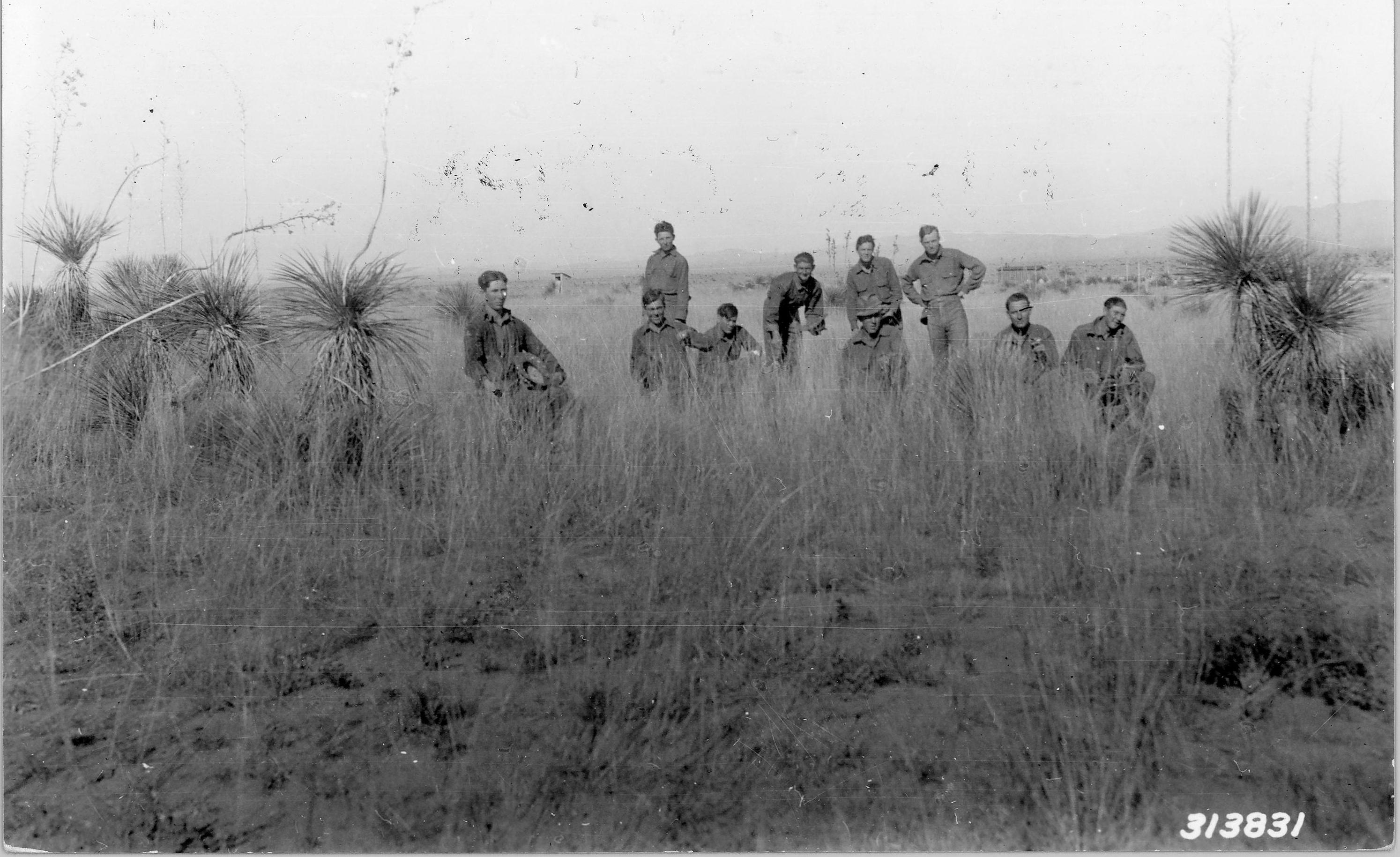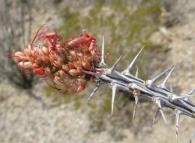 |
||
History of the Jornada:
|
The Jornada Today:
|
|
|
Occupying the arid expanse of the Jornada Basin, the Jornada Experimental Range northeast of Las Cruces, New Mexico, is a living laboratory, part of the USDA’s Agricultural Research Service focused on finding solutions to today’s issues in rangeland management. This plain to the east of the Rio Grande is uniquely positioned with the San Andres Mountains to the east, the Dona Ana mountains to the south, and the lava fields beside the Fra Cristobal mountain range to the north. Though its harsh, weathered landscape appears impermeable, this desert rangeland is a highly diverse, well functioning ecosystem, reacting to many natural and human-related factors. These desert rangelands are defined by extremely variable conditions, with a climate that moves quickly from drought to flooding, composed of nutrient-sparse vegetation and caliche-permeated soil. With no static equilibrium typical of this environment, rangeland researchers at The Jornada apply novel, science-based information to unravel the challenges with land management that began centuries ago. In as early as 1598 Don Juan de Oñate traversed this land, following the Rio Grande northward during his conquest of present-day New Mexico. Over the next three centuries, caravans of people and goods traveled through the Jornada del Muerto, a 100-mile trek through a basin aptly named for its unforgiving conditions. Lacking reliable surface water, the basin remained uninhabited until the Homestead Act of 1862 spurred the first settlements. Livestock began grazing the Jornada around 1888, when agricultural use of the land was first promoted. The scarcity of developed water kept grazing limited, but in 1903 a thriving cattle company drilled the first wells, located where the Jornada Experimental Range is headquartered today. It was during this era of livestock grazing expansion in the late 19th century that a noticeable decline in the rangelands emerged. Elmer Wooton, state botanist and professor at New Mexico College of Agriculture and Mechanical Arts in Las Cruces (today know as New Mexico State University), spent years documenting rangeland conditions across New Mexico. An early visionary, Wooton first described the social-ecological effects on the rangeland as it transitioned from a sparsely populated wilderness area to a region of extensive livestock production. A key to the establishment of the Jornada Experimental Range was rancher Charles Turney, who had made his living as a cowboy since the age of 8. In 1904 he arrived in Dona Ana County with a herd of cattle, and in subsequent years he developed a ranching empire spanning the Jornada Basin. By 1912, he held the grazing rights to over 197,000 acres of land and nine wells providing water to 4,000-5,000 head of cattle. Turney rose to prominence as a rancher, and he and Wooton began to establish a rapport on the benefits of rangeland research. Wooton conducted early experiments on the lands around the ranch, and it became evident to Turney that the creation of a large research reserve could also secure grazing rights for the cooperating rancher. This symbiotic partnership continued as Wooton left to serve the U.S. Department of Agriculture in 1911. From this post, he orchestrated the creation of the Jornada Range Reserve, spread across withdrawn public domain lands surrounding Turney’s ranch. President Taft signed the Executive Order in 1912 that created The Jornada as a research facility with USDA, just 124 days after New Mexico was awarded statehood. The annals of research from the reserve provide comprehensive insights into the development of 20th century rangelands, forming the basis for much of the research done at the Jornada Experimental Range today. Fascinatingly, many of the original goals outlined for the reserve in 1915 continue to apply to rangeland management issues today. The program initially focused on judging cattle capacity, creating management plans for dealing with drought, and establishing limits for livestock foraging. As research interests developed, less explicit problems were revealed that remain foundational today—such as how to assess and monitor land potential and its current status relative to that potential. |
We conduct science and develop technologies for the conservation and management of land. We focus on long-term research projects, and research that has application at the scales of land management – large landscapes that characterize the west and other rangelands around the globe. The Jornada scientists and staff believe results can come from a much more extensive, broad scope that takes into account the whole ecology of an area—an ecology exponentially more complex than originally thought. The variability of the lands we study reflects the need for a rangeland science that is more adaptable as well. By applying science-based information, researchers now help implement solutions to enduring land management issues. Our vision is a new framework for conducting rangeland science, finding applicable solutions to real problems affecting a global population. While the 20th century approaches of range scientists remain relevant, recent successful approaches are more applied, adaptive, and integrative. Just as the Jornada grew from roots in collaboration, this framework for sustainable management is now informed by collaborations with many different stakeholders. Early land management objectives of the Jornada still underlie research today, including understanding the role of management in the natural re-vegetation of lands, identifying management systems that allow natural re-seeding of depleted spaces, and using the experimental station as a demonstration of knowledge about the complexities of desert rangelands. The difference today is the focus of this research, as it has moved into practicing science at large landscape scales. Because of Wooton’s foresight to designate the reserve over a century ago, the Jornada has withstood development, positioning the area today as a large-scale ecological model providing ample space for long-term research efforts. The Jornada supports researchers of the Long-Term Agricultural Research (LTAR) program in finding science-based principles for land management while supporting agriculture and conservation. To expand insight into the ecology of rangelands, scientists at the Long-Term Ecological Research (LTER) site use the Jornada to understand the cascading effects of both land management and remediation of the desert. The importance of the Jornada also expands to its global applications. Complex, arid ecosystems exist worldwide, often defined by land management challenges. Researchers at the Jornada find practices and technologies that can be applied to improve land productivity, to employ science-based information to help land managers with conservation techniques, and to study how land resources will respond to present and future climate conditions. As the world constantly changes, the Jornada Experimental Range Research Unit adapts to address challenges faced by stewards of rangelands around the world.
by Jennifer Perez |
|




